New puppies are some of the most adorable things on Earth.
Almost anyone who encounters a puppy wants to shower them with kisses and cuddles. Their adorable faces get them off the hook for many naughty behaviours such as chewing things up and biting with those extra sharp puppy teeth!
No matter how cute they are, though, everyone knows training a puppy is very important. Whether you choose to use a private trainer, attend puppy classes or learn from a book, teaching basic obedience will always be an important part of your dog’s life.
These are my top five tips for the training you should do with your puppy in their first 100 days. Everything you do in the early stages has a lasting effect on your dog, and will help shape and build their behaviour in the future. So, these tips will help you set your puppy up to be a well-trained adult dog.
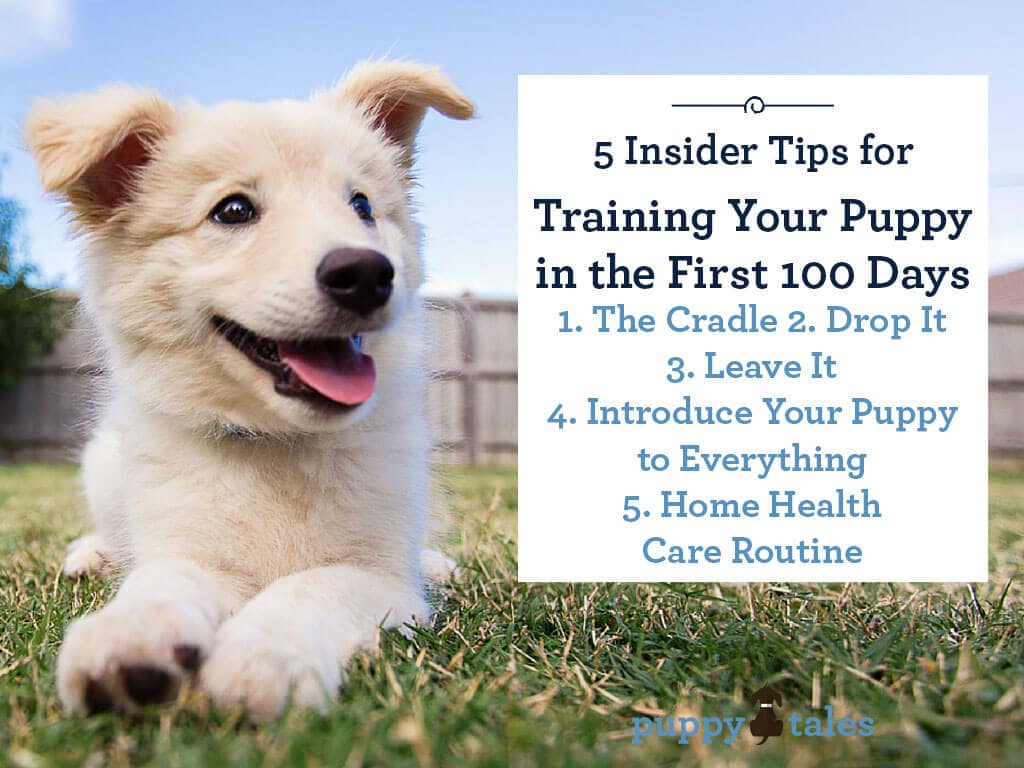
1. Teach Your Puppy ‘The Cradle’
The cradle provides you with the opportunity to give your puppy (and later on adult dog) a thorough body check. Check inside their ears, their teeth, in-between the pads on their feet, etc. Not only is this a good way to get your puppy used to being handled, but it also allows you to look for any cuts, sores or redness.
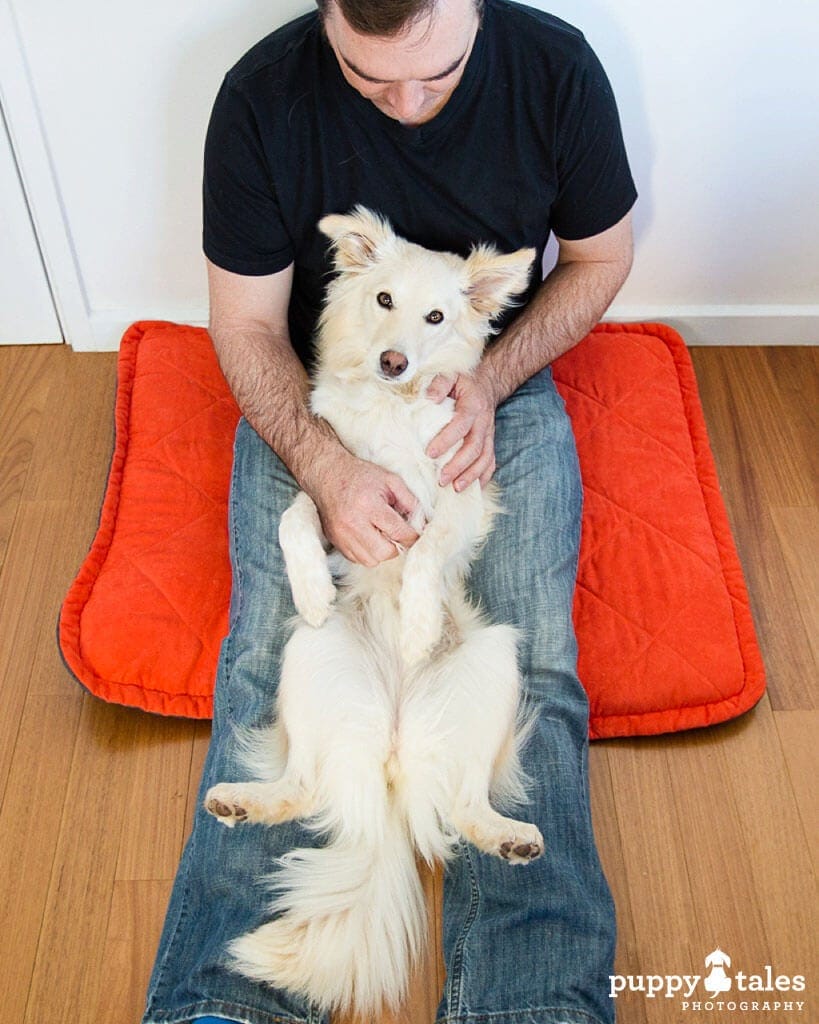
The cradle also serves as a way to calm your puppy down. You can use the cradle position any time, but it is particularly good if your puppy is getting out of control and you are unable to stop the behaviour. The cradle is a great way to show your leadership and teach your puppy to calm down.
To put your puppy into the cradle position:
- Sit on the floor with your legs slightly separated and stretched out in front of you.
- Pick your puppy up and place them on their back between your legs. Their head should be in the same direction as yours, and their rear legs aligned with yours.
- Gently tighten your thighs around their body to hold them in this position.
- Your puppy may struggle at first; this is normal. If they struggle, tell them “no” and tighten your legs just enough to hold them still. Once your puppy relaxes, relax any tension from your legs. If your puppy tries to bite you, tell them “no”. You can also hold them with your thumb and index finger around their armpits so it is very difficult for them to actually make contact.
Once your puppy is relaxed, you should calmly praise them. You can also use this time to give them a nice belly rub! - You want to keep them in this position for about 10 minutes then calmly allow them to get up.
Although it may be a struggle in the beginning, your puppy will learn to love this position and it will serve as not only a behavioural shaping tool, but also a great bonding tool.
2. Teach Your Puppy to ‘Drop It’
Puppies love to pick anything and everything off of the ground. Shoes, kids toys, paper, wrappers, even old nasty food left on the sidewalk. Teaching your dog the “drop it” command can not only help you protect your things, but it can also help prevent your puppy from ingesting something that is potentially dangerous.
You can begin teaching them this command with one of their own toys. Put your puppy on a leash so you have some control and hand them a toy. Once it is in their mouth, use the command “drop it”. You can use a small treat to encourage them to drop the toy, or you can use another toy as an “exchange” of sorts. Once the puppy releases the original toy, make sure you praise them verbally. Immediately give them the treat or the other toy. You should practice this about 10 times in a row several times a day.
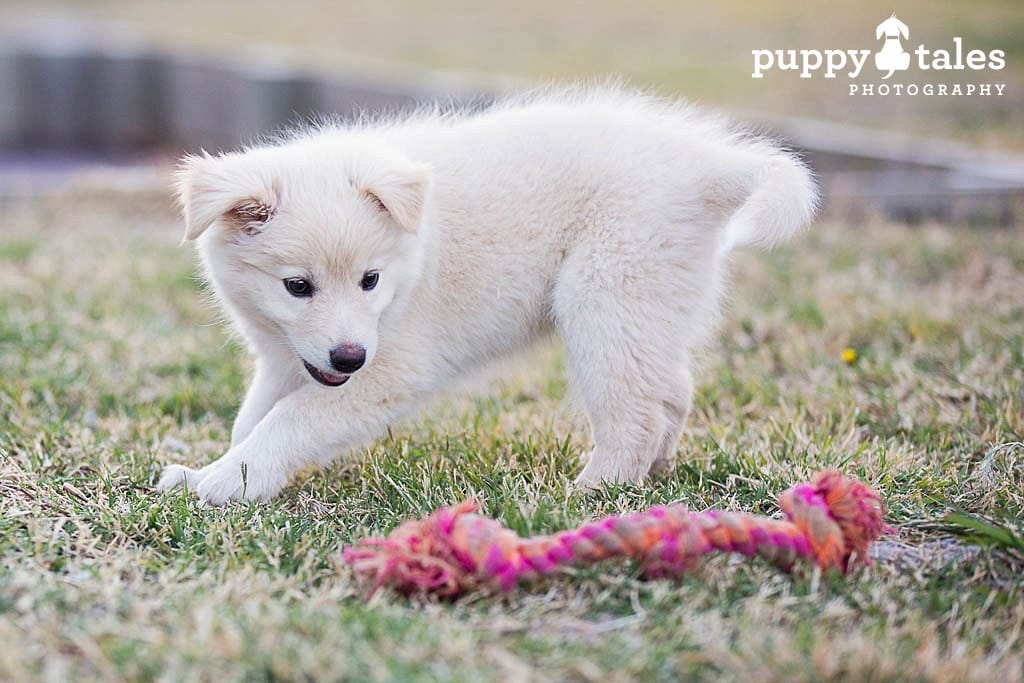
3. Teach Your Puppy to ‘Leave It’
Equally important as teaching a puppy to drop something out of their mouth, is to teach them to never pick it up in the first place. “Leave it” can be used to tell your puppy not to pick something up or to ignore something. You should begin by putting your puppy on a leash so you have some control. Place a few objects scattered on the ground with some distance between them. Walk you puppy past these objects one at a time. If your puppy goes to pick one up, tell them in a firm and confident tone to “leave it”. If you need to, you can give a gentle, guiding tug on the leash to lead their mouth away from the object. As soon as they look to you, praise them. You can also use a treat to reward them for leaving the object.
Continue to practice this with a variety of objects until the puppy get the hang of it. You can then begin to put some food on the ground and practice in the same way. Once you begin taking your puppy for walks you can use the “leave it” command for things on the sidewalk, plants, or even other dogs that you may want them ignore.
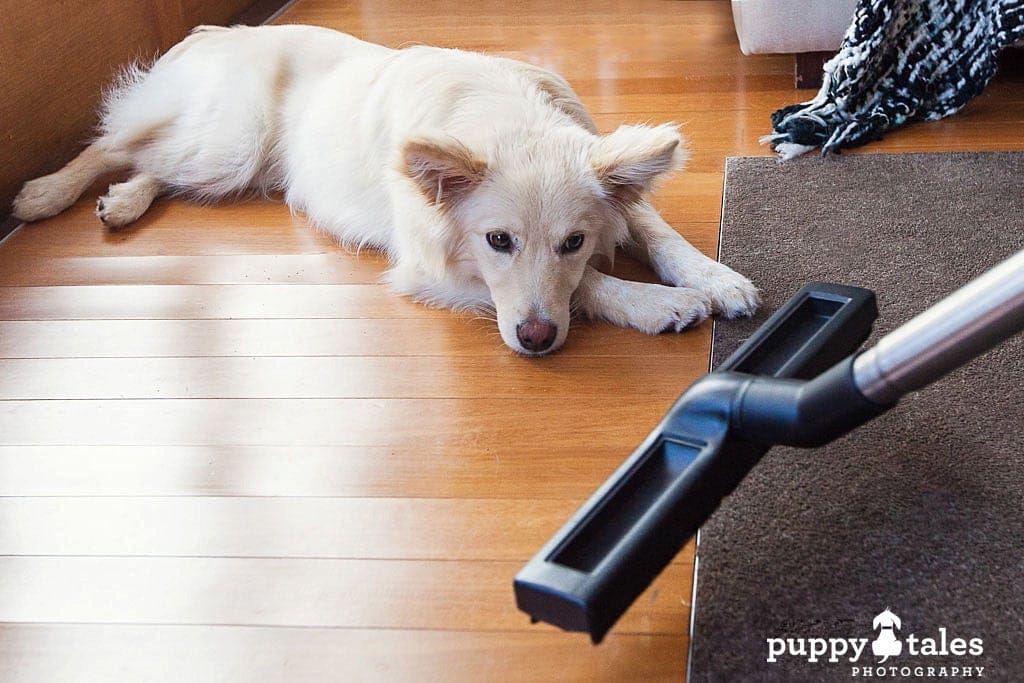
4. Introduce Your Puppy to Everything
Every puppy, just like every person, has their own unique personality. Although some traits are more common in some breeds, there is still a wide variation in personality. Some puppies are confident and brave, and some are shy and fearful. One of the most important things you can do to shape a puppy’s behaviour is to expose them to a lot of different things early in life. Socialising your puppy with other dogs is very important.
It’s important to also expose your dog to all the things they will encounter in their everyday life. Puppies may be spooked by things that are loud, move fast, look different or smell different. Things like lawn mowers, rakes, doors slamming, big trucks, skateboards, grills on the street, men with beards, people with large hats, or even the smell of fish. You want to introduce your puppy to as many things as you can as early on as you can.
You should never “push” your puppy toward something they are frightened of. Instead, allow them to stand back and simply observe. Use calm and confident praise to encourage them to check it out or just to simply not react. Never mollycoddle them though because you may inadvertently make the puppy think you are telling them there is something to fear with your tone of voice. If you can, rub your hand on the object and allow your puppy to sniff your hand.
If your puppy remains fearful, keep them at enough of a distance that they feel relaxed, but do not avoid the situation. Instead try to expose your puppy to it as often as possible so they learn there is nothing to fear. Slowly encourage them and allow them to build their confidence. Remember the more places you take them to and the more things you introduce them to early on will help your puppy be a more confident dog in the future.
Puppy Tales has a great Socialisation checklist to help get you started:
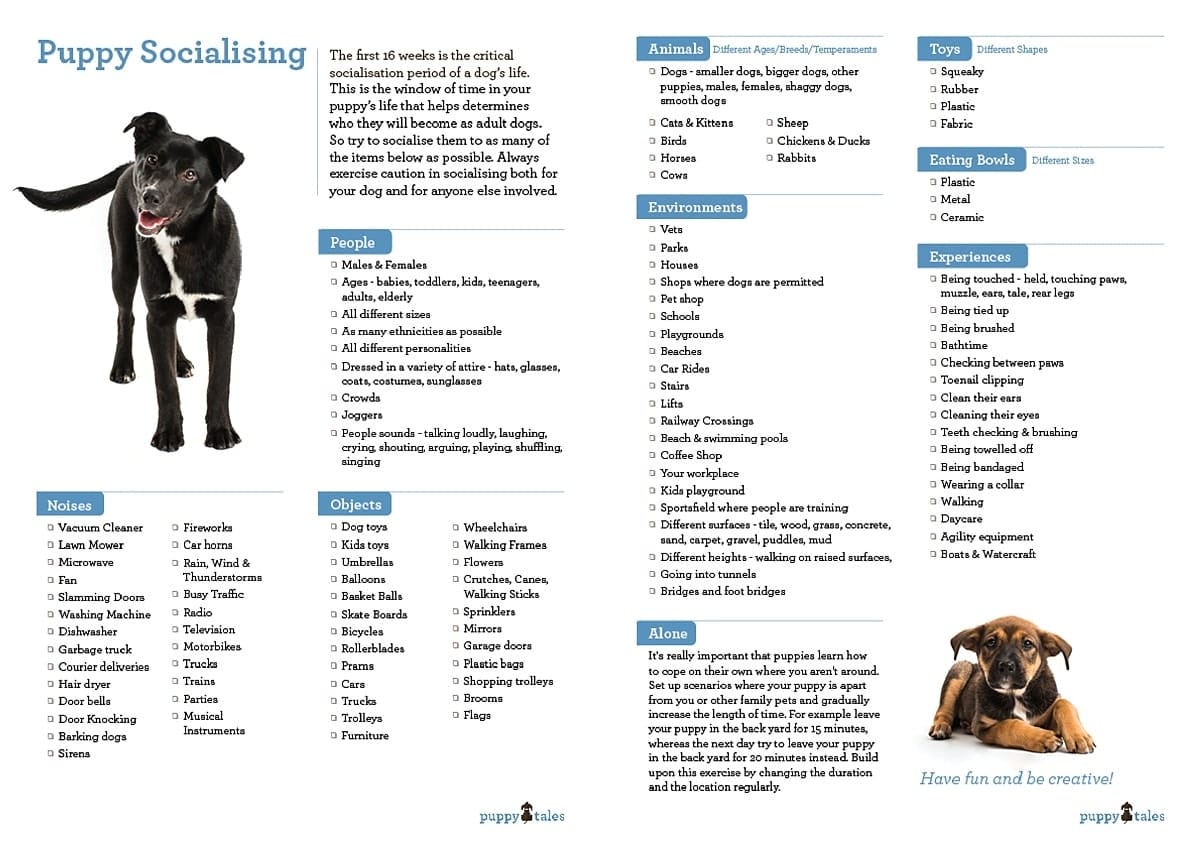
Puppy Socialisation
A Free Downloadable
Checklist for You
5. Start a Home Health Care Routine
Trips to the veterinarian’s office are always expensive. A simple ear infection for example, can end up costing several hundred dollars to treat. There are 3 main things you can do at home to potentially help keep some of your medical costs down.
Ear Cleaning
Ear infections are a common occurrence in dogs, particularly in those with dropped ears. Cleaning your puppy’s ears on a weekly basis can help prevent wax build up that can lead to an infection. You want to buy a dog ear cleaner and some cotton wool/pads. Saturate the cotton wool with ear cleaner. Have your dog sit in front of you, between your legs, or in the cradle position.
Wrap the cotton around your index finger and gently massage it inside your puppy’s ear canal. Dogs have very long ear canals, so do not worry about getting near the ear drum. It is important you stick your finger down the canal to remove any build up. If the cotton wool is very dirty you can repeat the procedure. You can then use an additional piece of cotton to wipe the inside of the ear flap itself. If the ear is continually very dirty, or has a bad odour, you should seek medical attention.
Teeth Cleaning
Dogs get plaque and tarter build up just like humans. Good quality food and treats help, but sometimes this is not enough. Brushing your puppy’s teeth will help curb any buildup which could later lead to tooth decay. You want to buy a dog toothpaste as human toothpaste is toxic to dogs. Many toothpastes are sold in a kit with a small toothbrush and finger brush, but if not just buy a child size toothbrush. Have your puppy sit in front of you, between your legs, or in the cradle position. Using a small amount of toothpaste, gently run the brush over the surface of each tooth. This takes some getting used to so a quick “in and out” will suffice at the start. By the time your puppy gets their adult teeth, they should be used to the brushing and you can do a more thorough job.
Brushing
Brushing your puppy helps to stimulate the oils in their skin keeping the coat healthy and shiny. It also helps dogs with long coats from getting knots or mattes in their fur. Anything that gets caught on your puppy’s skin or prevents air from getting to the skin, such as knotted fur, can cause sores to fester. Brushing your puppy regularly helps maintain a healthy coat and healthy skin.
Summary
Dog training is not magic. The more time you put in, the better results you get. Having a puppy is a lot of fun, but it’s also work. If you don’t teach your puppy rules, structure and boundaries in the early days, you will ultimately have an out of control dog. It is always easier to teach your puppy things when they are young. The first 100 days with your puppy are a critical time for not only learning obedience, but also learning how to function as a well behaved dog!

Beth Jeffery
Beth is a dog trainer and animal behaviourist with 15 years experience based in San Diego, CA. She has trained Guide Dogs for the Blind, Assistance Dogs for the Disabled, and thousands of private clients. Beth recently published her first Book – The First 100 Days With Your Puppy: Train Your Dog Like a Dog Trainer.


